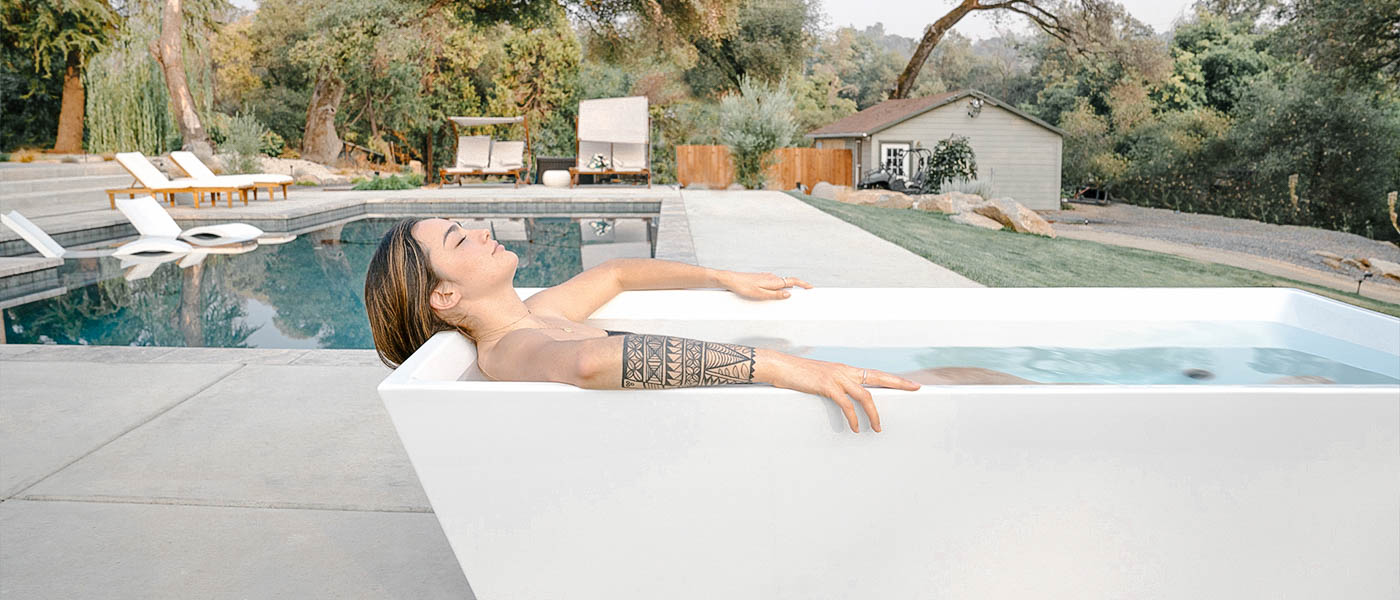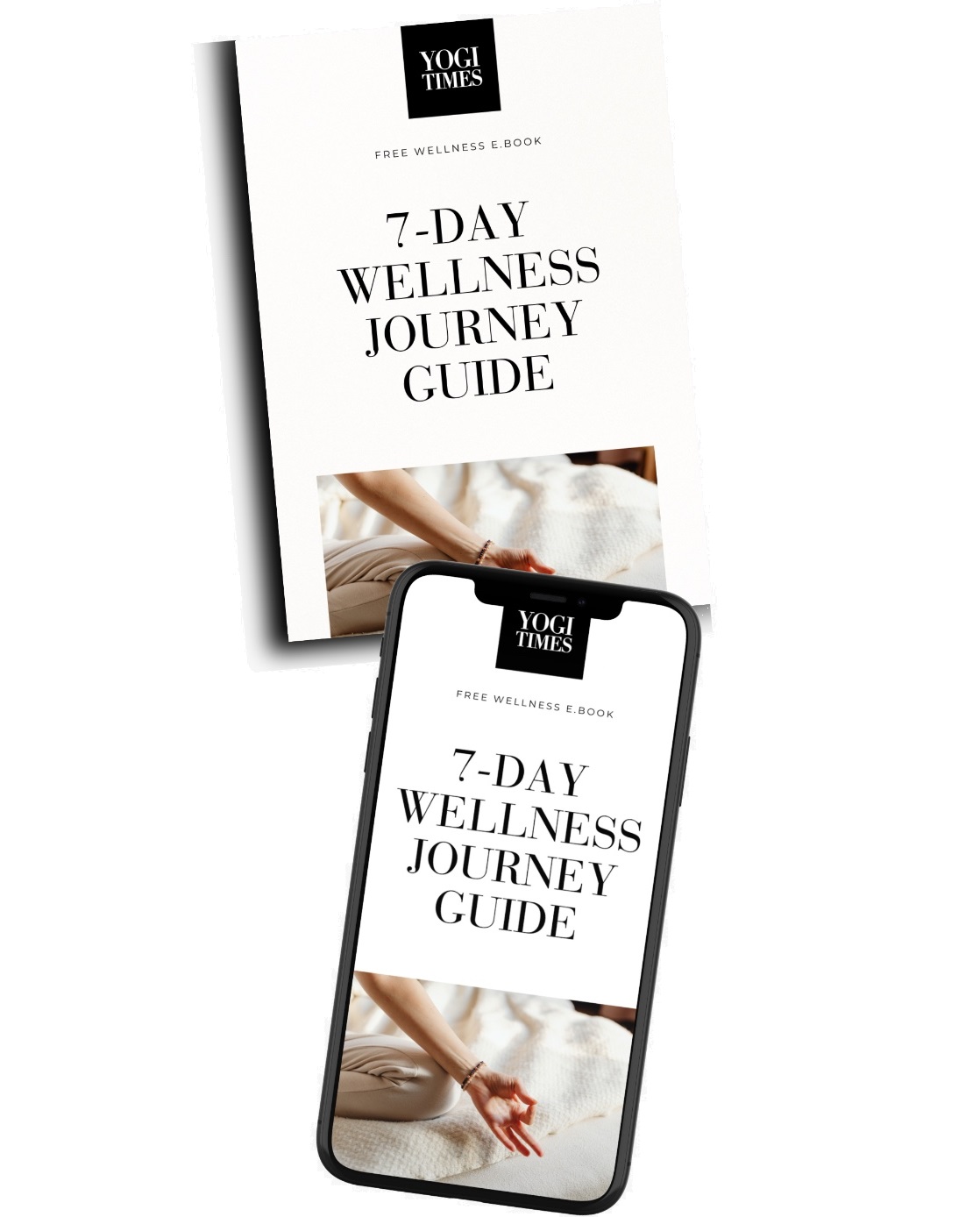Ice bath benefits in the morning

Exploring the advantages of cold water immersion in the am
Ice baths, a long-favored method among professional athletes for muscle recovery and enhanced performance, have surged in popularity across wellness circles, bringing attention to a wide range of ice bath benefits.
Ice bath benefits range from improved energy and better heat regulation to potentially boosting immunity.
Originating from traditions as old as the Wim Hof method, which combines cold exposure with breathing techniques and meditation, this practice has not only proven effective for athletic recovery but also sparked interest for its broader health advantages.
While ongoing research aims to fully document the extent of these benefits, the anecdotal evidence and preliminary studies make a compelling case for the power of cold therapy.
Key Takeaways
- Popularity and Origins: Ice bath benefits have surged, partly due to the Wim Hof method, which combines breathing techniques, meditation, and cold exposure. They’re not just for professional athletes anymore; many are adopting ice baths for health benefits.
- Benefits of Cold Therapy: Proponents of ice baths cite numerous benefits, including increased energy, improved internal heat regulation, enhanced muscle recovery, reduced inflammation, and a boost in immunity.
- Understanding Ice Baths: An ice bath involves immersing oneself in water at 0º Celsius (32º Fahrenheit) or colder. This practice can also include taking a bath in an icy lake.
- Cold Plunge vs. Ice Bath: The article differentiates between cold plunges (cool water baths at 10–15° Celsius or 50–59° Fahrenheit) and ice baths, suggesting beginners start with the former and gradually move to colder temperatures.
- Physical Ice Bath Benefits: The ice bath benefits include improve blood flow, reduce inflammation, soothe muscle soreness, help with body temperature regulation, and boost the immune system response.
- Mental Health Benefits: Ice baths can reduce stress, improve sleep, boost mood, reduce anxiety and depression, increase focus and alertness, stimulate the vagus nerve, and improve central nervous system function.
- Potential Risks: While ice baths can be beneficial, they also carry risks such as drowning, hypothermia, and heart failure, especially for those with preexisting health conditions.
- Safe Practice Guidelines: Consult a doctor before starting ice baths, especially for individuals with certain medical conditions. Make sure to have s safe ice bath experience, including how to get in and out safely, watch for hypothermia, and ensure you can breathe properly during the bath.
- How to Start: Starting with cold plunges and gradually moving to colder temperatures for beginners with emphasis on the importance of short duration, initially aiming for a few seconds up to two minutes, and at most 10 to 15 minutes, even with experience.
- Common Mistakes: Newcomers should avoid starting with water that’s too cold, overextending the duration of the bath, being inconsistent with their practice, losing control of their breathing, and only partially submerging their bodies.
- Tips for Success: Preparing with cold showers, focusing on breathing, taking cold plunges within 30 minutes of exercise, starting with feet first, and protecting hands to prevent discomfort and loss of mobility.
- Conclusion: Readers should try exploring the ice bath benefits, starting with cold showers and gradually moving to full ice baths. It notes the potential for discomfort but also the benefits and improvements that can come with regular practice.

The Science Behind Cold Plunges
An ice bath is a cold plunge on a tub, jacuzzi, or small pool filled with water and ice, bringing the water temperature to 0º Celsius or 32º Fahrenheit. A bath on an icy lake would also fall in this category.
Also Read>>> Best Cold Plunge Tubs for Home
There’s a strong surge in ice bathing among the rest of us who don’t belong to the world of pro athletes but make health a big priority. We want to take good care of our bodies, use natural methods to increase our energy levels, work on our longevity, and improve our immunity. It’s also a fun and challenging activity to do!
Comparing Ice Bath Benefits and Contrast Water Therapy Benefits
Differences Between Ice Baths and Warm Water Immersion
In this article, I mention almost interchangeably the terms ice bath and cold plunge.
In a literal way, a cold plunge is any bath we take in cool water (10–15° Celsius or 50–59° Fahrenheit and lower).
Most of ice bath benefits and risks associated with ice baths are similar to that of a cold plunge a few degrees warmer. If you are starting, begin with cold plunges and see if you want to make your way toward icy water.
Physiological Effects of Chilling in Ice Water
Effects of ice baths on blood flow
When you immerse yourself in a cold bath, your blood vessels constrict. This reaction has a rebound effect called vasodilation that occurs when the body warms up again. This widening of the blood vessels increases blood flow, and general blood circulation improves.
At the same time, metabolic waste and toxins are flushed while increasing levels of oxygen and nutrients in the cells.
Reducing inflammation
Inflammation is the body’s natural response when it becomes infected or injured. While this reaction is often very beneficial, it can be triggered unnecessarily, creating further complications and damage to our health.
Scientists have proven that cold water exposure can reduce the concentration of different inflammatory markers and thus help reduce inflammation. Some of these biomarkers might cause chronic inflammation and even autoimmune diseases.
If you suffer from a condition such as an autoimmune disease, talk to your doctor and see if regular cold water immersion could be good for you.
Cold Therapy and Its Role in Muscle Healing
It is well known that ice-cold water can have a soothing effect on sore muscles after having an intense workout. It also improves our recovery when we do physical exercise after a prolonged period of inactivity.
The general feeling of soreness is associated with muscle stiffness, weakness, and swelling. Ice bath benefits are, in this case, much more significant than those that ice packs bring. Cold water immersion affects the whole body and not only a localized area.
The Impact of Ice Baths on Internal Body Temperature
Brown adipose tissue, or brown fat, is a type of fat that contains a considerable amount of mitochondria for thermogenesis. This process helps maintain a warm temperature in your body. Even though we are born with high amounts of brown fat, we lose most of it when we become adults.
Cold water immersion is a proven method to increase the quantity of brown fat in our tissues. This higher level of brown adipose brings the benefit no longer shivering when experiencing cold exposure.
Boosting Immunity with Regular Cold Exposure
A few studies have explored a link between cold exposure and immune system strengthening.
A study published in the Netherlands showed a robust immune response in a group of people who followed the Wim Hof method. This method combines ice baths, meditation sessions, and breathing techniques.
This study demonstrated ways to voluntarily activate our sympathetic nervous system and regulate our innate immune response. This voluntary activation means that we can fight infections or respond to the presence of toxins without causing excessive inflammation.
The immune response of the subjects trained in this method was able to fight a mild infection much quicker and with fewer symptoms than those who did not practice these techniques.
It needs to be clearer how much of the successful immune response was due to the cold water immersion. However, other studies have shown that the stress induced by cold exposure can somewhat activate our immunity.
Mental and Emotional Impacts of Cold Water Therapy
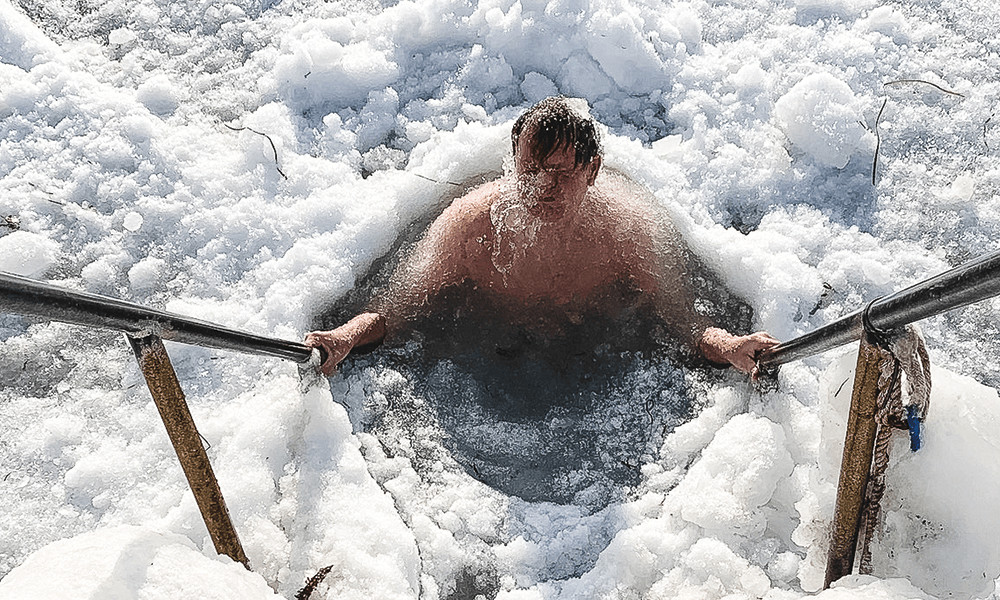
Ice baths can have a powerful positive impact on our overall mental health. Let’s discover the benefits that cold hydrotherapy can bring.
Reducing Stress and Anxiety Through Ice Bath Practices
One of the many essential ice bath benefits is lowering cortisol levels. Cortisol is the hormone responsible for inducing a stress response in our body. We need it in the morning to activate our mind and body and tackle the rest of our day. It also becomes useful when we are in danger and our body needs to focus resources on our brain and muscles.
Our modern lifestyle causes this hormone to be released way too often and in too large quantities when it is unnecessary. This constant high level of cortisol can become quite harmful. It causes vital resources to be taken away from other functions of our body, such as the immune or the reproductive systems.
Taking an ice bath or cold plunge regularly can help reduce the level of cortisol our bodies are enduring. This effect can bring several long-term health benefits.
At the same time, cold exposure can increase melatonin levels, the hormone responsible for inducing sleep. Surprisingly enough, while a hot bath might help us feel more relaxed, a cold plunge in the evening will help us sleep quicker and more deeply.
Cold Showers and Mental Clarity
Ice bath benefits | Boost your mood, reduce anxiety and depression, increase focus and alertness
It’s no secret that most of us cannot avoid living with tons of to-do lists, unexpected events, pressure from others. We also live with the general discomfort from things not going exactly as we plan them. One of the essential tools that help us humans deal with this overflow of stimuli and lack of peace is anxiety.
It’s easy to see that anxiety is quite useless and there is few things we can focus on and act upon. It’s much harder, however, to learn to keep this anxiety from creeping into our daily lives.
Get your own at home Ice Bath here
There are two ways through which ice baths help diminish our anxiety levels.
First, when we take an ice bath, our mind is forced to focus on just one intense stimulus. There is no more jumping from one thought to the next, and our tendency to ruminate dissipates. By having these regular bursts of overstimulation, we are training the ‘monkey’ inside our ‘monkey mind’ to be calmer. This allows us to focus more often on one thing at a time and what it can do.
Second, during an ice bath, we are exposed to a very stressful situation for our body and mind.
This regular exposure to a ‘synthetic’ experience of high discomfort will increase our tolerance to stressful events. Because of this, we will become more resilient and suffer much less, resulting in reduced anxiety levels.
Lastly, going through the experience of an ice bath usually leaves us with an incredible feeling of achievement. We experience a very noticeable boost to our energy level and mood. It’s very similar to having an intense workout or playing a fun game of any competitive sport. It’s one of those feelings that make the whole experience worth it!
Stimulate your vagus nerve
Learning what the vagus nerve is and how to stimulate it should be taught in schools, if not in job training. This part of our nervous system is one of the closest things to a ‘relax the body’ button that we have.
The vagus nerve activates our parasympathetic nervous system, which regulates functions such as resting and digesting.
There are several exercises and techniques to stimulate this nerve, and one of the most potent ways to do this is by practicing cold exposure. We achieve this by learning to regulate our breathing when exposed to cold water and not resorting to our default response of gasping for air.
Thanks to this stimulation and the reduction of cortisol levels, we are becoming much better equipped to deal with stressful situations in our life.
How Cold Exposure Aids Athletic Performance
Improving central nervous system function
The general state of our central nervous system improves significantly due to better sleep, reduced cortisol levels, and vagus nerve stimulation.
Thanks to this, we experience great benefits in our mental state and enjoy lower levels of fatigue. A better central nervous system condition can make a difference in performance for athletes since it improves explosiveness and reaction times.
The Truth About Ice Bath Benefits and Risks
Check first with your doctor
It’s essential to ensure that going through cold water immersion will be safe for you. The best idea is to consult with your doctor about whether cold baths could harm your health.
Do not to miss this step if you suffer from one or more of these medical conditions:
- Preexisting cardiovascular disease
- High blood pressure
- Poor blood circulation
- Diabetes
- Venostasis
- Cold agglutinin disease
- Neuropathy
Debunking Myths About Ice Bath Treatment
Drowning
Any bath comes with the inherent risk of drowning. While this risk is extremely low, it increases significantly when we are under the influence of alcohol or drugs or when young children take a bath unsupervised.
In the case of ice baths, the gasping reflex that we usually get when first touching the chilled water increases the chances of drowning when our head is completely submerged underwater while getting this impulse.
Hypothermia
Hypothermia occurs as your core body temperature drops a few degrees below nominal.
This process takes place in different stages. The first 3 minutes induce the cooling of our skin. After those 3 minutes, a cooling of our superficial muscles takes place. After about 30 minutes, our deep tissue begins to lose temperature, which is when hypothermia occurs.
Heart failure
Some peer-reviewed studies have found that heart failure could occur during an ice bath if we submerge entirely and very quickly into the water without giving time to our body to react. In this situation, our heart would receive two opposite signals, and diving into the water would trigger the response to hold our breath, while the sudden intense cold would provoke the gasp reflex to kick in.
This conflict of signals could, hypothetically, induce a regular heartbeat and even cause the heart to stop. In any case, anyone with any form of heart disease should refrain from taking ice baths.
Practical Tips for Ice Bath Routines
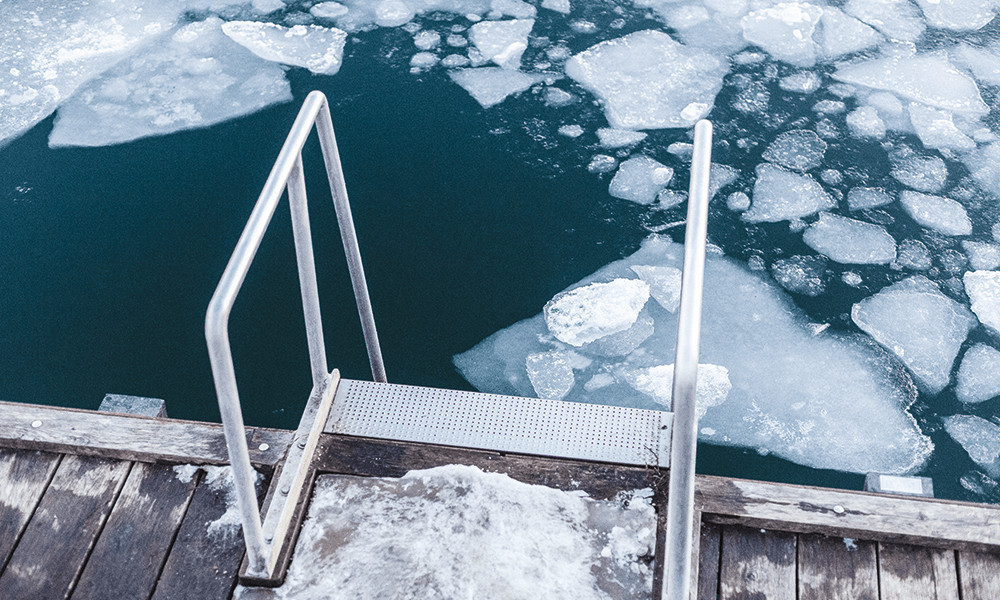
Even if you have an excellent overall health condition, you should not overestimate some risks associated with ice bathing and keep in mind some basic safety precautions:
Safe Practices for Cold Water Immersion
Make sure you can come out of the bath without difficulty, even if your muscles become stiff. The last thing you want is to struggle to push yourself out while your body temperature decreases. For this purpose, avoid natural settings such as holes in icy lakes or anything similar that makes it awkward to come back out. Bathtubs, barrels, or shallow pools.
Making sure you will be able to breathe
In the same manner, as above, there is a high chance that you will naturally gasp for air as your entire body becomes immersed in the cold water. This response can put your body and mind very close to panic mode. If this happens, it can affect your judgment and ability to react and think.
Another reason, at least when you don’t have experience with cold water immersions, is to take an ice bath where it will be straightforward to keep your head above water even if your standard capacity to float becomes reduced.
Watching out for hypothermia
Experience in cold water immersion will dictate whether you can take longer sessions, but as a rule of thumb, these should be brief when starting.
Make sure you stay within 10 to 15 minutes of cold immersion time unless you become highly experienced with ice baths and you consult with your doctor.
Always watch for signals telling you that your internal temperature has become too low and it’s time to recover your heat.
Guidelines for Beginners to Ice Bathing
How long should your ice bath be?
The length of your ice bath depends primarily on your tolerance to the cold and your experience. Different persons will be able to tolerate different sizes and temperatures of the water.
Your body mass index, the state of your blood circulatory system, or where you live are just a few factors that can affect how long you can and how long you should stay in the ice bath.
The absolute maximum recommended time is 10 to 15 minutes. In any case, most of the ice bath benefits occur in the first 5 minutes. That’s the time needed for our blood vessels to constrict, our muscle recovery to happen, and for the rest of the fantastic physical, immunological and mental benefits to taking place.
Always be aware of your body temperature, and don’t let the ice bath run any longer if you sense that it’s starting to come down.
What is the best way for beginners to start doing ice baths?
If you are starting, it’s good to go first for a cold plunge with water at around 10–15° Celsius (50–59° Fahrenheit). You can bring the water temperature down a few degrees from time to time and work your way until you feel ready to make your cold plunge a proper ice bath.
At this point, you must have one thing clear about ice bath benefits and cold exposure: the discomfort while exposing yourself to the cold will probably never go away. Instead, you will know by heart the unpleasant sensations that your body goes through.
For example, you will become familiar with the shock when ice-cold water touches your body. In this way, eliminating the surprise factor will help significantly make things more manageable.
Aim for no more than a few seconds in the beginning, and progress your way towards being able to stand up to half a minute, one minute or two, exposed to the cold water.
Common Misconceptions About Cold Immersion Therapy
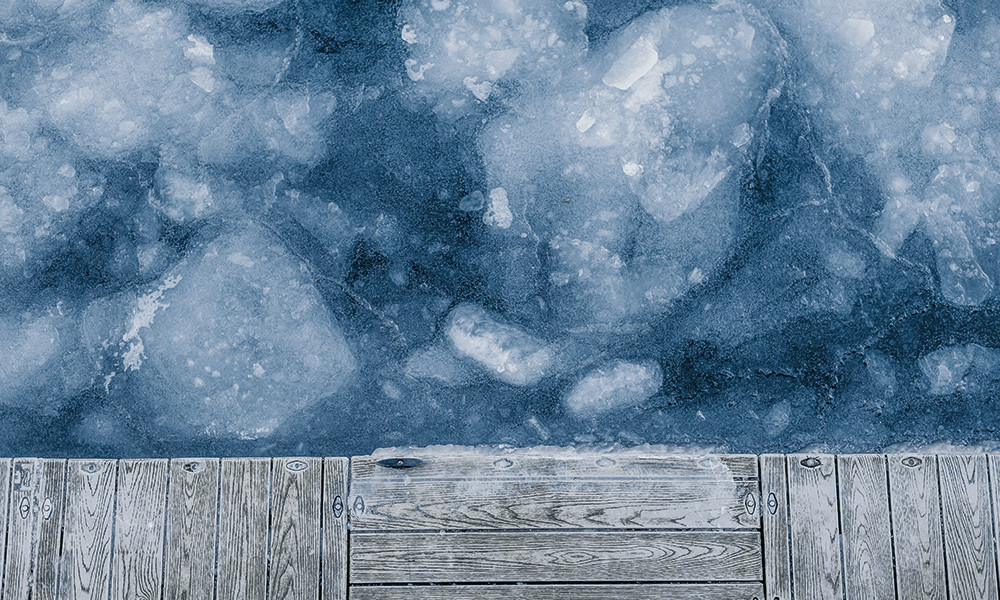
- Starting with water that is too cold for you. If you are new to cold plunges and begin with water that feels too cold, you risk overwhelming yourself. This situation can result in an experience that feels too unpleasant while experiencing no benefits.
- Overextending the length of your cold plunge. Ice bath benefits take no more than five minutes to kick in. There’s not much of a point in staying 15, 30 minutes, or more and risking hypothermia.
- Being too inconsistent. Cold baths will become much easier as you make them part of your daily routine. Also, some long-term ice bath benefits, such as strengthening your immune response or increasing your levels of healthy brown fat, only happen after a long period of regular cold therapy.
Get your Home Ice Bath here
- Losing control of breathing. Think of breathing as holding the steering wheel during your ice bath. The moment your breathing becomes very shallow and fast, and you realize that you can’t calm your pace, it’s an excellent idea to stop. You are probably having a bad day, your mind is too much in control, or your body is just not ready to do the fantastic things it does when exposed to the cold.
- Submerging only a part of your body. It’s crucial to immerse most of the body, down to the back of your neck, in the cold water to trigger the appropriate physical response to the cold. A partial submersion will keep you from receiving most of the benefits of the cold.
Tips for a successful Cold Plunge or Ice Bath
Prepare progressively with cold showers. You can easily take a cold shower daily if you don’t have easy access to a tub, a small pool, or a barrel to take the ice bath. This way, you will get familiar with this fantastic routine’s discomfort.
Learn to be aware of your breathing. Managing your breathing should be one of your first points of focus as you start to do ice baths. Your level of discomfort will decrease tenfold as you put all of your mind into breathing in and out deeply and symmetrically. You will also be working on your mental clarity, capacity to focus, and lowering your anxiety levels.
Take the cold plunge within 30 minutes of exercise. In this way, you will experience a much better muscle recovery. Also, if you make it a habit to take an ice bath after your intense workouts, you will have extra motivation to work hard, knowing that a soothing cold plunge is awaiting you. At the same time, the ice bath will be much easier to take and will feel great!
Go with your feet first. Progressive immersion of your body, beginning with your feet, will allow you to remain in control and not become overwhelmed by the initial shock from the plunge into the ice-cold water. It will also reduce the chances of suffering a cardiac arrest which, though extremely low in healthy individuals, can still occur if a particular set of conditions occur.
Protect your hands. While keeping your core body temperature and even that of your limbs, it’s relatively simple. While taking an ice bath, your hands can become very cold in just a few seconds. This feeling can induce quite an unpleasant situation and make you lose mobility in your fingers. It’s very easy to avoid this just by protecting your hands behind your bent knees or under your armpits.
In conclusion, taking that first ice bath and cold shower
So, are you ready to start your journey to enjoying an actual ice-cold bath? I invite you to take that first step, or better said, that first-hand movement that turns the warm, relaxing water from your shower into a seemingly hostile, shocking icy water.
How does it feel? What is your mood afterward?
Then I suggest you do it again the next day and commit to a whole week of experiencing this relatively short-lived but intense discomfort. What becomes more manageable and feels better? What stays the same?
Are you ready to jump on this journey? Get Your Home Ice Bath Here
Read more on Ice bath on the following YOGI TIMES articles:
- Improving mental health with cold therapy
- Best Cold Plunge Tub & Ice Bath Tub for Home
- Using cold plunge therapy for recovery after exercise
- Everything you need to know about cold plunge tubs: the ultimate guide
- Can cold plunge therapy help with weight loss? discover the benefits today
- Boost your immune system with cold plunge therapy
If you liked our Ice bath benefits article, please like share and comment below.
FAQs
Yes, ice bath benefits are beneficial. They help reduce inflammation, soothe muscle soreness, improve blood circulation, enhance immune system response, and aid in body temperature regulation.
The recommended maximum time is 10 to 15 minutes, with most benefits occurring within the first 5 minutes of immersion.
While ice bath benefits are big, it is essential to listen to your body and avoid overdoing it. Daily ice baths may only be necessary for some and could depend on individual tolerance and health conditions.
The frequency can vary based on personal goals, recovery needs, and tolerance. It’s essential to ensure it fits within a healthy routine and does not cause undue stress on the body.
Like ice baths, a cold plunge should be brief, typically no longer than 10 to 15 minutes, with attention to how your body responds.
Daily cold plunges can be part of a routine if they are well-tolerated and beneficial, but it’s crucial to monitor for any adverse effects and adjust accordingly.
Yes, soaking in cold water can offer several health benefits, including reduced stress levels, improved sleep quality, and enhanced mood.
Daily ice baths may offer benefits but should be approached with caution. Individual health conditions should be considered, and if unsure, consult a healthcare provider.
Ice baths constrict blood vessels and reduce inflammation, improving circulation and muscle recovery and potentially boosting the immune system. They also have mental health benefits, such as reducing stress, improving sleep, and reducing inflammation, leading to improved circulation.
Beginners should start with shorter durations, aiming for a few seconds to a minute, and gradually increase their tolerance before attempting longer sessions up to the recommended 10 to 15 minutes.

